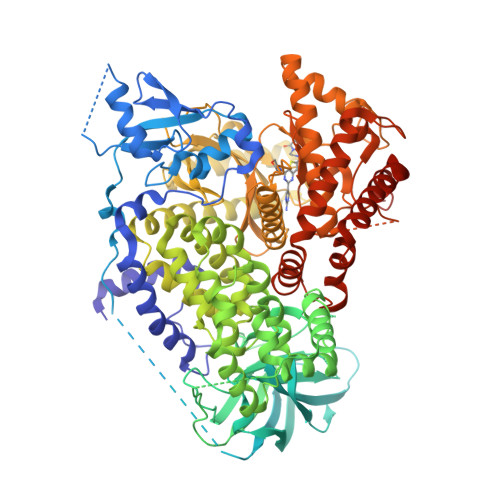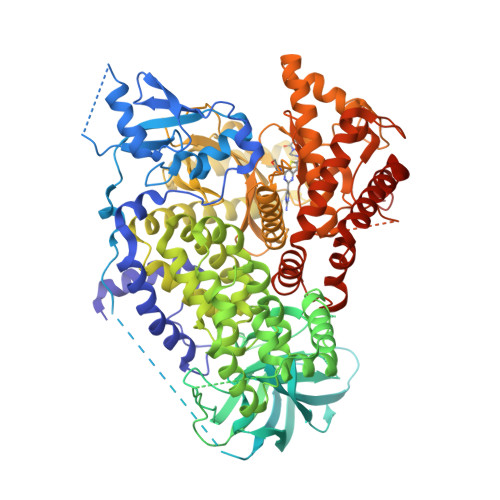Discovery of a Potent, Selective, and Orally Available Class I Phosphatidylinositol 3-Kinase (PI3K)/Mammalian Target of Rapamycin (mTOR) Kinase Inhibitor (GDC-0980) for the Treatment of Cancer.
Sutherlin, D.P., Bao, L., Berry, M., Castanedo, G., Chuckowree, I., Dotson, J., Folks, A., Friedman, L., Goldsmith, R., Gunzner, J., Heffron, T., Lesnick, J., Lewis, C., Mathieu, S., Murray, J., Nonomiya, J., Pang, J., Pegg, N., Prior, W.W., Rouge, L., Salphati, L., Sampath, D., Tian, Q., Tsui, V., Wan, N.C., Wang, S., Wei, B., Wiesmann, C., Wu, P., Zhu, B.Y., Olivero, A.(2011) J Med Chem 54: 7579-7587
- PubMed: 21981714
- DOI: https://doi.org/10.1021/jm2009327
- Primary Citation of Related Structures:
3TL5 - PubMed Abstract:
The discovery of 2 (GDC-0980), a class I PI3K and mTOR kinase inhibitor for oncology indications, is described. mTOR inhibition was added to the class I PI3K inhibitor 1 (GDC-0941) scaffold primarily through the substitution of the indazole in 1 for a 2-aminopyrimidine. This substitution also increased the microsomal stability and the free fraction of compounds as evidenced through a pairwise comparison of molecules that were otherwise identical. Highlighted in detail are analogues of an advanced compound 4 that were designed to improve solubility, resulting in 2. This compound, is potent across PI3K class I isoforms with IC(50)s of 5, 27, 7, and 14 nM for PI3Kα, β, δ, and γ, respectively, inhibits mTOR with a K(i) of 17 nM yet is highly selective versus a large panel of kinases including others in the PIKK family. On the basis of the cell potency, low clearance in mouse, and high free fraction, 2 demonstrated significant efficacy in mouse xenografts when dosed as low as 1 mg/kg orally and is currently in phase I clinical trials for cancer.
Organizational Affiliation:
Genentech, Inc., South San Francisco, CA 94080, USA. sutherlin.dan@gene.com

















